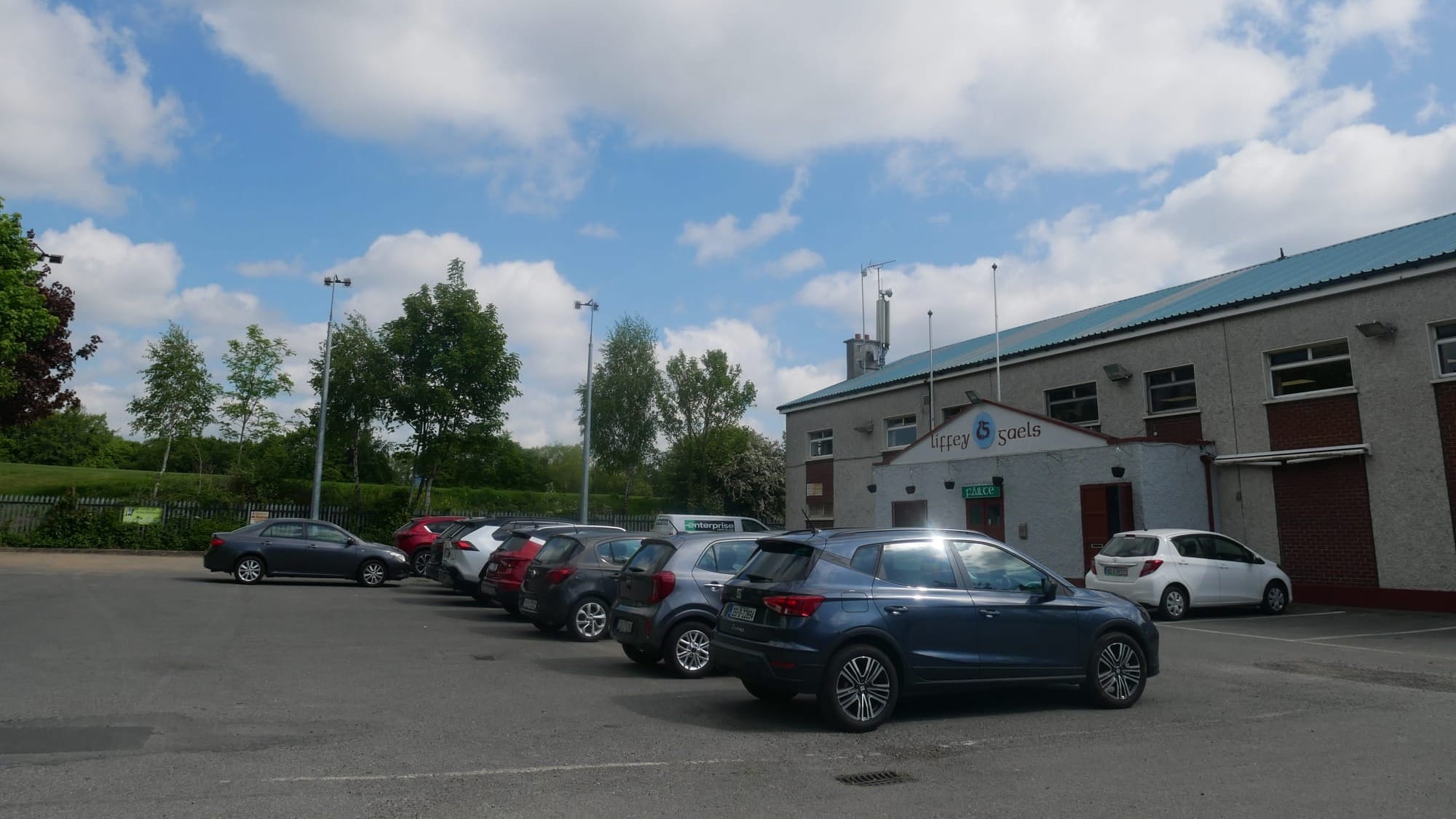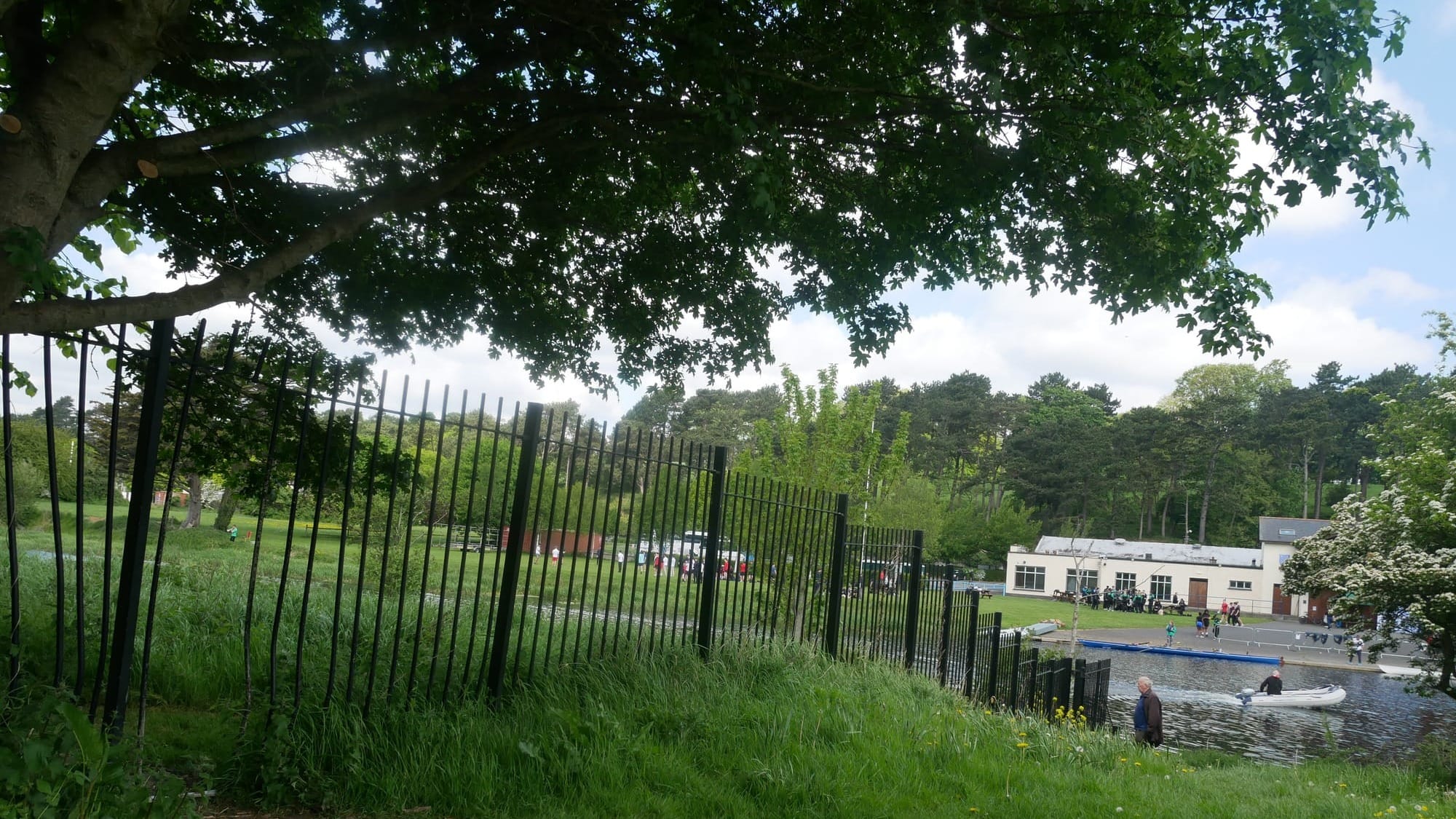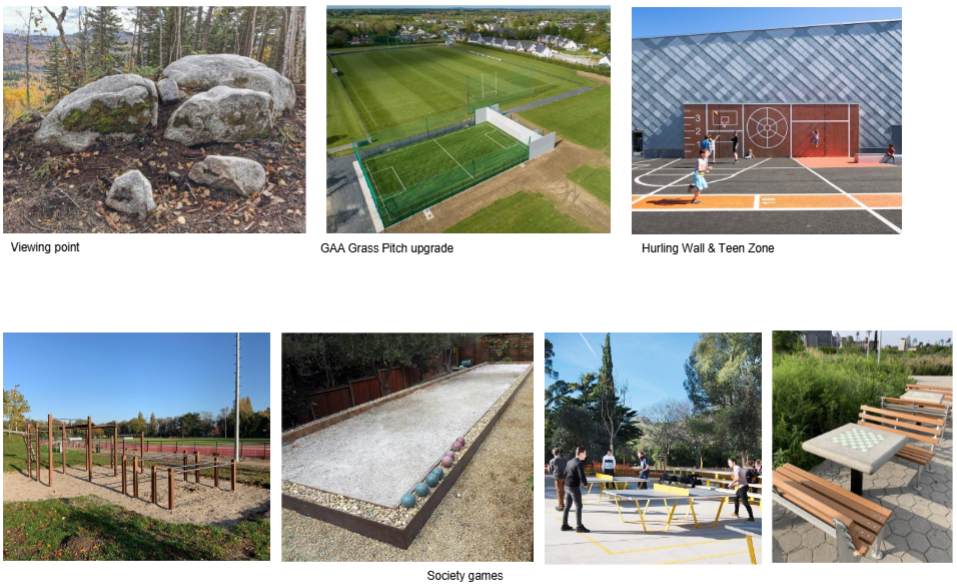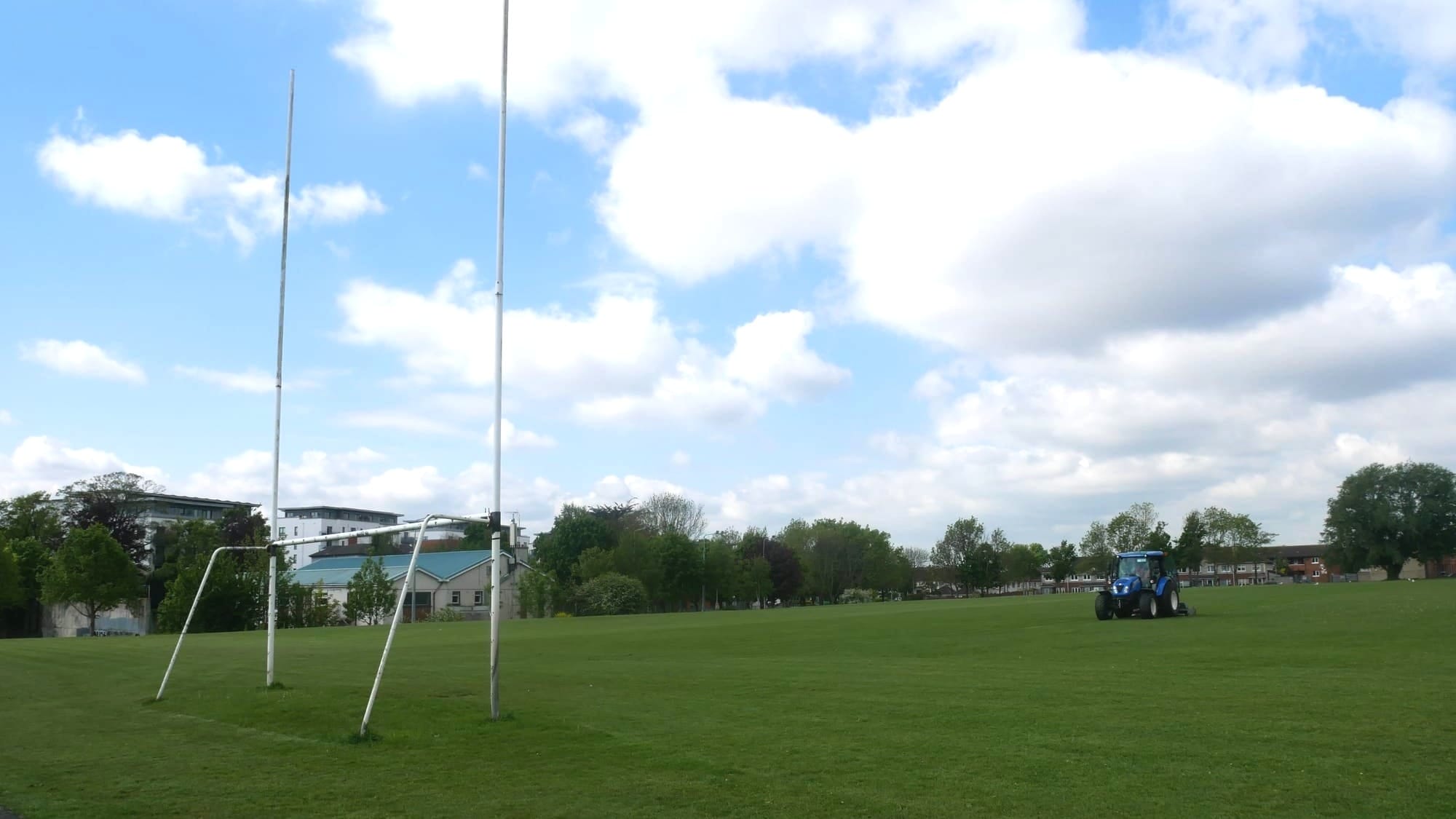Long-time campaigners bristle at politicians' back-patting over new lift at Clongriffin Dart Station
“They were actually trying to take credit for the extremely hard work that we have put in."
Changes would bring more routes into the green spaces, as well as natural play areas, added amenities and upgraded pitches.

At a little after 11am on Thursday, a woman squeezed through a gap in the bent railings at the western end of the Irish National War Memorial Gardens in Islandbridge.
Her head was down. She was following a route on her phone on Google Maps.
Behind her, a long tarmac path ran gently upwards through what is known these days at Liffey Valley Park. It was deserted.
The path is banked on either side with wild thickets of trees and nettles and dock leaves and buttercups, until it reaches a kissing gate and an arched bridge over the roaring Chapelizod Bypass.
The other side of the bridge, a tractor lapped the bigger of two GAA pitches in the Good Counsel Liffey Gaels park, leaving stripes in the grass. Further still, sat the pebbledash team clubhouse and Sarsfield Road.

Improving these two spaces – the wilderness, and the amenities and pitches at the fields – and better linking them into the wider area, has been on the council’s agenda for years.
Dublin city councillors got sight of the current vision, at the last meeting of their South Central Area Committee.
Changes would bring more routes into the green spaces to try to overcome the barriers that currently hinder easy access, as well as natural play areas, added amenities and upgraded pitches.
“We started the process so long ago,” said Damien Maguire, the juvenile secretary of Good Counsel Liffey Gaels GAA club
The club started to talk to the council about upgrades to the pitches and park several years ago, he said, even before Liffey Gaels and Good Counsel, two clubs serving the wider area, merged into one.
They’ve had a working group, met with residents groups, had online meetings and on-site meetings, said Maguire, who was the club’s vice chair at the time.
Liffey Gaels has been using the park since the late 1980s, he said, and caring for it, but it has needed upgrading. “It was probably in a bit of limbo.”
Calls to do that heightened in 2020 during the pandemic, when there was a bit of a spike in anti-social behaviour, said Maguire. “We were trying to deal with that.”
Liffey Gaels have been maintaining the pitches, he said, clearing stones and such. But in winter, the pitches are unplayable, he said.
They were struggling to keep people engaged, he said. “We’re catering from four-year-olds, GAA for mothers. You’re trying to encourage people to stay active and play and it just wasn’t happening.”
At the council committee meeting on 28 April, area manager Bruce Phillips said the push for a masterplan for the Liffey Gaels open space led to them to look too at the wilderness to the north of it over the Chapelizod Bypass.
They figured it was a twofer, he said. “That they needed to be looked at together.”
Getting to green spaces in the area is an issue, says the feasibility study done for the council by landscape architects at Cunnane Stratton Reynolds.

That’s because of physical barriers. The Liffey River blocks people from going between the Irish National War Memorial Gardens to the south of the waterway, and Phoenix Park to the north.
The Chapelizod Bypass and the rail line are barriers that block people living south of the bypass from reaching the War Memorial Gardens.
“The two sites present an opportunity to bridge this segregation and improve access for many people living nearby to this important site,” says the feasibility study.
So many people live south of the bypass and railway, it says, “resulting in large demand for greenspace in these areas but with limited access”.
So, the report shows, the council could build pedestrian and cycle infrastructure around the junction where Con Colbert Road meets the Chapelizod Bypass.
It also shows new entrances to both spaces at that same junction, and another crossing over, or across, the bypass between them.
Designs also show a more accessible route from War Memorial Gardens into Liffey Valley Park.
The two green spaces – the wilderness of the Liffey Valley Park and the amenities at the Liffey Gael pitches – are distinctive, the report says. “These spaces need to be linked while also building upon their distinctive characteristics.”
On the southern space, the pitches area would include more activities for people of all abilities, it says. Designs show ping-pong tables, and bowls, as well as a hurling wall and a teen zone, and also the GAA grass pitch upgrades.

The report also shows a new main entrance near the clubhouse on Sarsfield Road, and an upgraded entrance in the south-west corner at East Timor Park with an intimate parkland and natural play.
On the northern side, the wilderness should be respected, it says. “Any future design proposals for this green space should respect the characteristics and propose light touch interventions.”
One idea it puts forward is a viewing spot at the high point in Liffey Valley Park.
Maguire, of Liffey Gaels Good Counsel, said the club welcomes the plans, and the push for more accessibility.
But there is still ongoing engagement about the nature of the pitch upgrades, he said.

“They’ve agreed in principle to build an astro pitch on the juvenile pitch,” he said. But not to put in, as the club had wanted, a bigger all-weather pitch, of a similar kind to that at St Anne’s Park.
That’s because of climate change, he said. “They wouldn’t go for it.”
Instead, the council has been treating the pitch and sanding it, he said. But “part of the pitch still needs to be lifted. We’re still engaging with them on that.”
There’s a lot of home-building in the area which is good, he said. “But the green areas need to be functional. You can’t have a pitch that isn’t functional for months of the year or after dark.”
There need to be measures to deal with horses grazing on the pitches too, he says. There needs to be signage, proper fencing and then fines given out, he said.
It’s good that other amenities are to be built there, he said.
That said, the main use is and has been the GAA and training, he says. “So we’re always maintaining that has to be the core function of the park. For that to happen, works need to happen to the pitches.”
Maguire says that it would be good to see real joined-up thinking around accessibility for an even wider area.
The merged club is growing, with members from Drimnagh, Walkinstown, he said. And the clubhouse is busy too – with a gym, Irish dancing classes, a COPD group and much more.
Creating better access from the Blackhorse end of Inchicore northwards, with a green-link through the area, would be so valuable, he said.
Like, with a route through the CIÉ Railworks, which he knows is a working industrial yard, he says. But “they could have segregated access to get across”.
At the council meeting, independent Councillor Vincent Jackson also widened the lens, saying there should be more basic signage.
He had been running a quiz in Cherry Orchard and loads of people didn’t even know where the War Memorial Gardens were, he said. “I said, well it’s there since the 1930s. But we’re not telling people what’s on their doorsteps.”
He also asked what the status was of the Commemorative Bridge to link Phoenix Park over the Liffey to War Memorial Gardens.
Dublin City Council granted planning permission for that to the Office of Public Works in December 2024.
Minister of State Kieran O’Donnell, a Fine Gael TD, has said that he expects work to start on site on the bridge later this year.